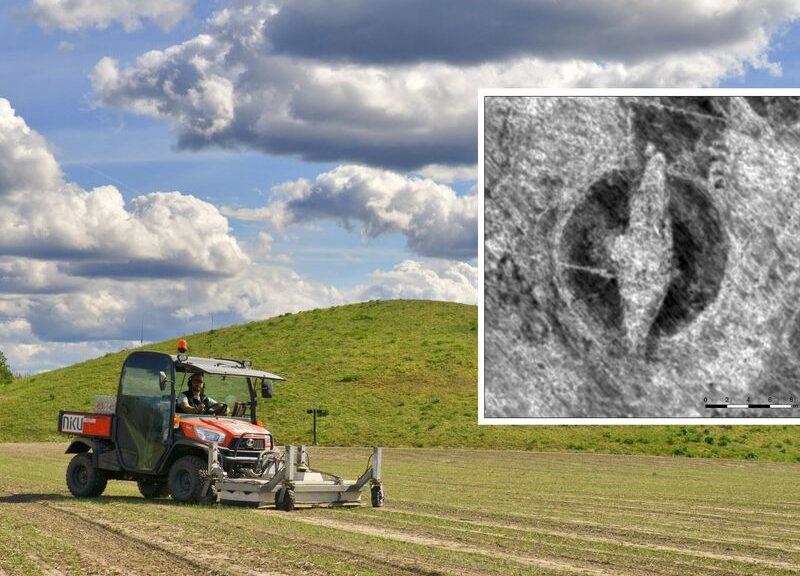For the First Time in a Century, Norway Will Excavate Viking Ship Burial

Smithsonian Mag reports that Sveinung Rotevatn, Norway’s Minister of Climate and Environment, announced that the 65-foot Gjellestad ship will be excavated in order to protect what is left of it from being destroyed by fungus.
Archaeologists are racing against the clock to save the remains of a buried Viking ship from a ruthless foe: fungus.
If the project is successful, the 65-foot-long (20 meters) oak vessel — called the Gjellestad ship — will become the first Viking ship to be excavated in Norway in 115 years, said Sveinung Rotevatn, the Norwegian Minister of Climate and Environment.
“Norway has a very special responsibility safeguarding our Viking Age heritage,” Rotevatn told Live Science in an email. “Now, we are choosing to excavate in order to protect what remains of the find, and secure important knowledge about the Viking Age for future generations.”
The ship is buried at a well-known Viking archaeological site at Gjellestad, near Halden, a town in southeastern Norway. But scientists discovered the vessel only recently, in the fall of 2018, by using radar scans that can detect structures underground. The scans revealed not only the ship but also the Viking cemetery where it was ritually buried.
The team determined that the Gjellestad ship was built between the end of the eighth century and the beginning of the 10th century.
The vessel was likely made for traveling long distances at sea, said Sigrid Mannsåker Gundersen, an archaeologist with the Viken County Council.
At the time, archaeologists were hesitant to excavate the ship, because buried wet wood can be damaged when exposed to the open air, Live Science previously reported. After a test excavation in 2019, however, archaeologists learned that they would have to dig up the ship soon or lose it to decay.
The narrow trench they excavated showed that the ship was very decomposed. “Only the imprints of the planks — or ‘strakes’ — were left, together with the iron nails,” Mannsåker Gundersen told Live Science in an email. “The only part that was still solid wood was the keel.”
But even the keel is in bad shape; an analysis showed it is infected with fungus and very brittle, likely from periods of drought.
“To rescue whatever wood is left before it is too late, and to gain as much information about the ship and the grave as possible, it is important to excavate now,” Mannsåker Gundersen said.
Archaeologists hope to find some preserved wood, “but even if there are only smaller amounts of organic material left, the excavation will provide valuable information about the ship and the grave,” Mannsåker Gundersen said. “A lot can be made out of imprints, objects, and different analyses of the soils and materials left.”

The excavation is scheduled to start in June, barring any complications from the COVID-19 pandemic.
The process will begin with archaeologists stripping off the topsoil and then sieving that dirt, just in case it holds any archaeological treasures that were ploughed by farmers over the centuries.
Then, the team will set up a tent to protect the ship’s remains and begin removing the earth that filled the ship after its burial.
At the same time, the archaeologists will document every layer of the remaining wood and take 3D scans of it, said Christian Løchsen Rødsrud, an archaeologist at the Museum of Cultural History in Norway.
Some of the ship’s remains will be visible only as imprints in the ground; these will also be 3D-scanned, Løchsen Rødsrud told Live Science in an email.
“The wooden remains of the ship will have to be kept wet during excavation.” Later, the remaining wooden objects and ship parts will be preserved with polyethylene glycol — a substance that can give rotten wood solidity and strength, he added.
It’s likely that the ship was made both for sailing and rowing, “although we still don’t know for certain if it had a mast,” Mannsåker Gundersen said. “This is one of the questions we hope will be answered during the excavation this year.”
